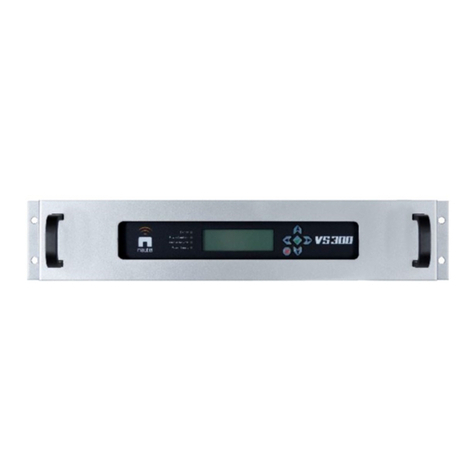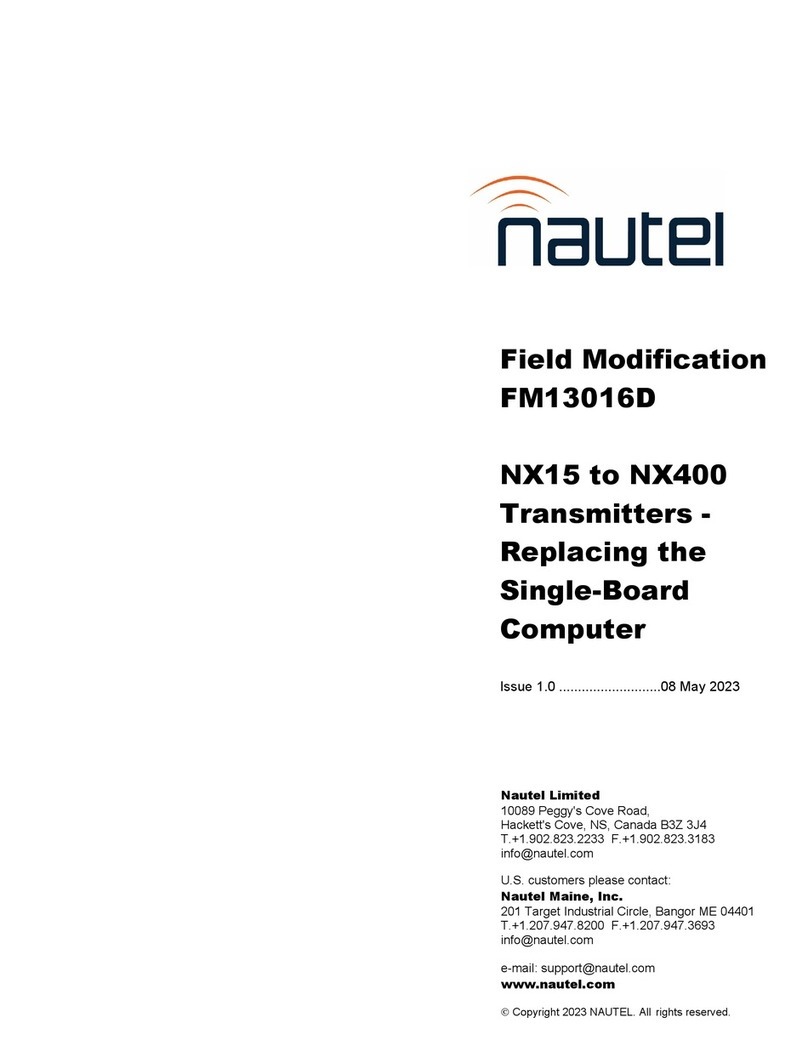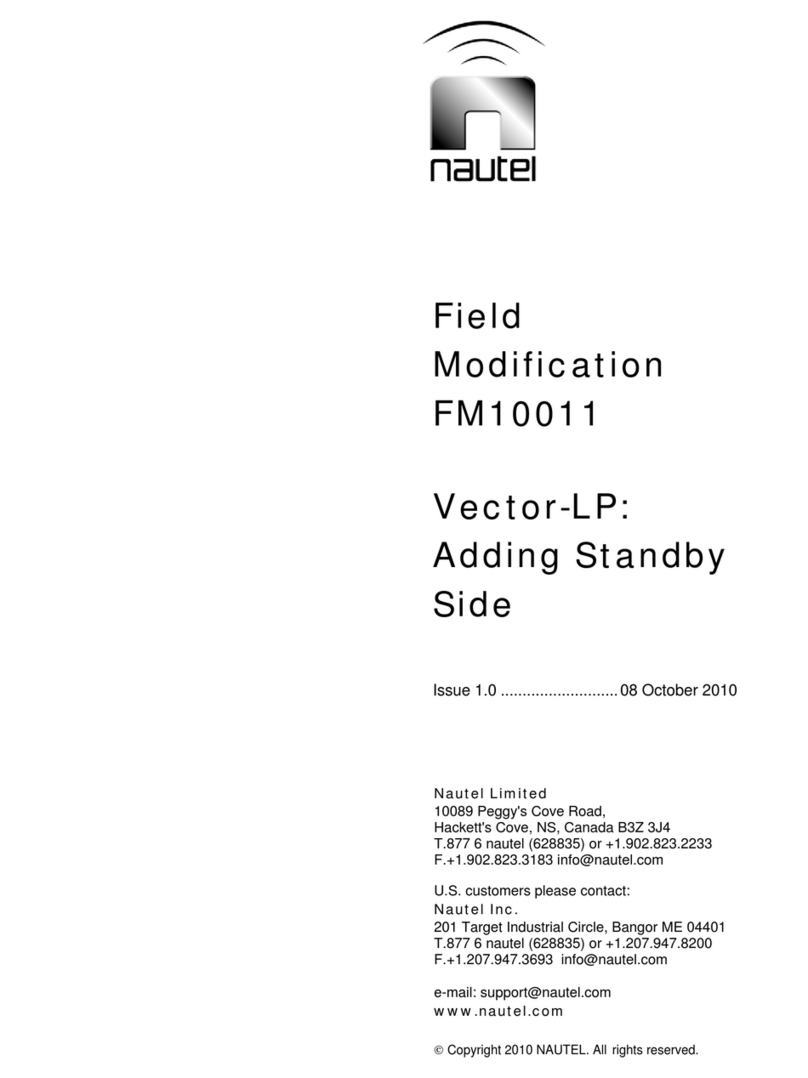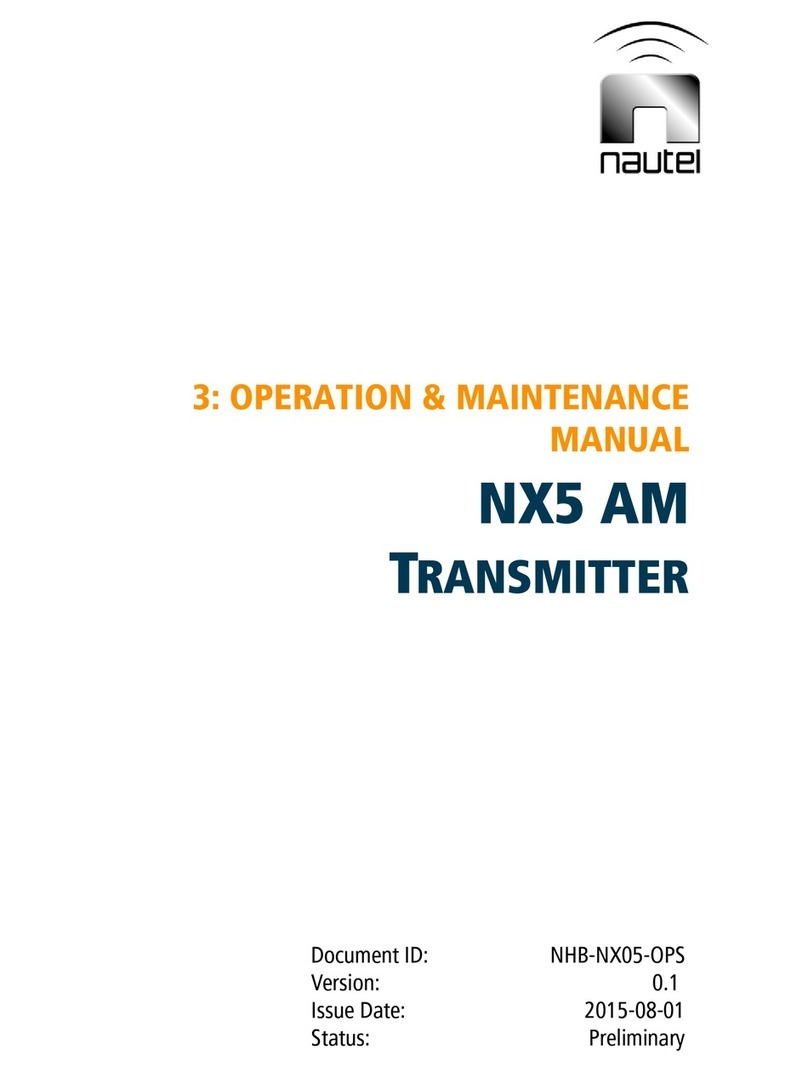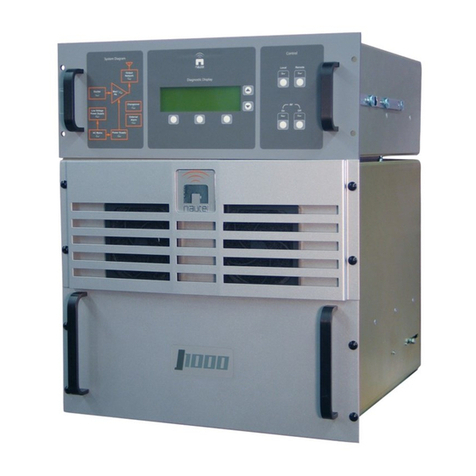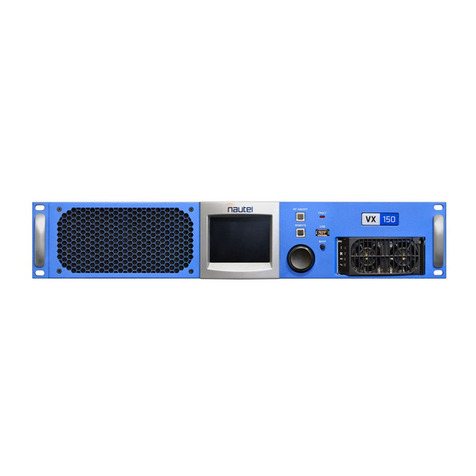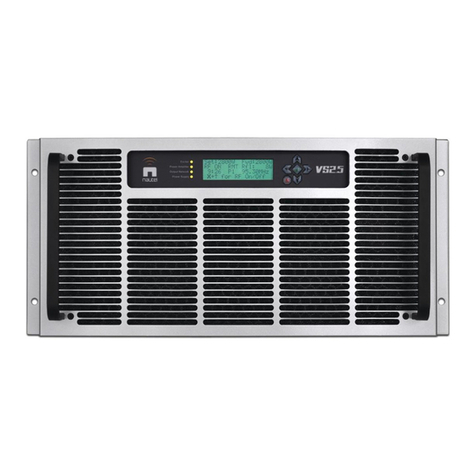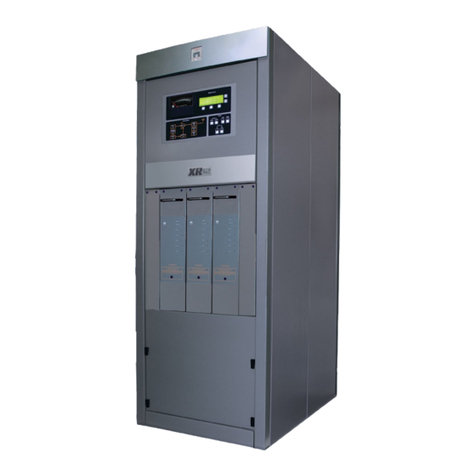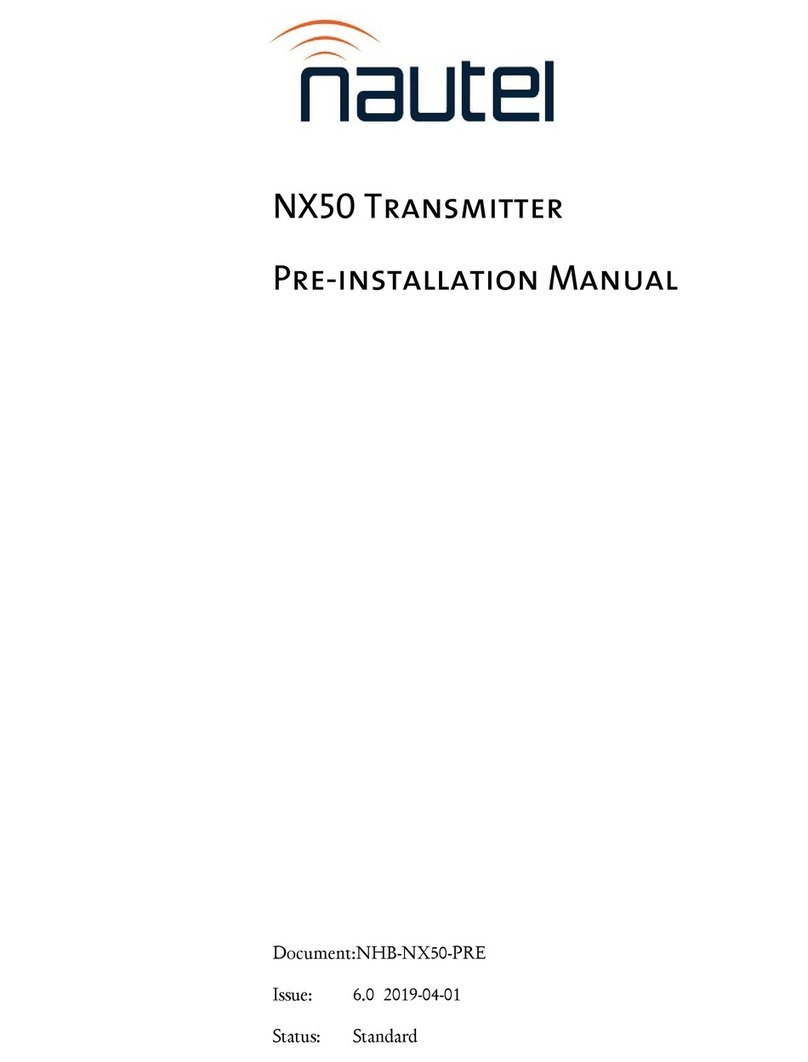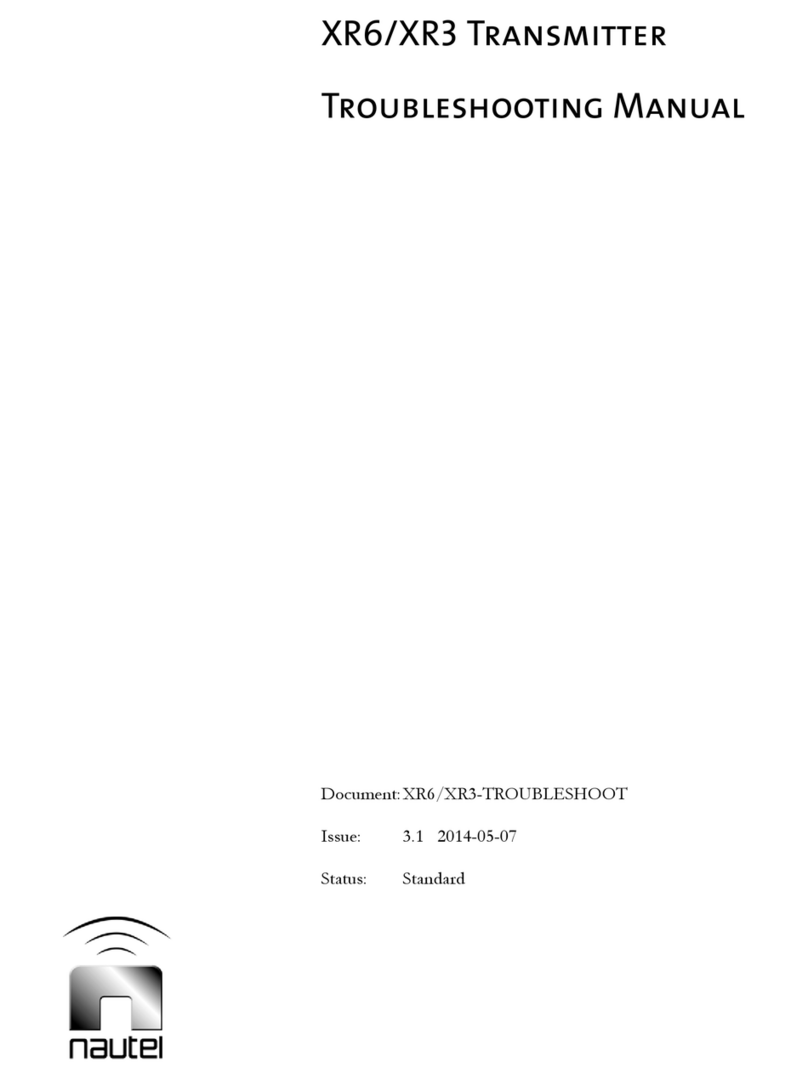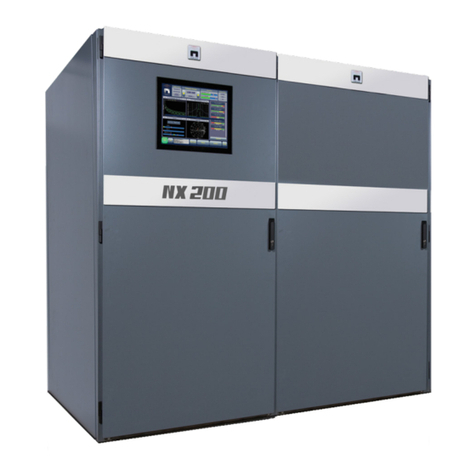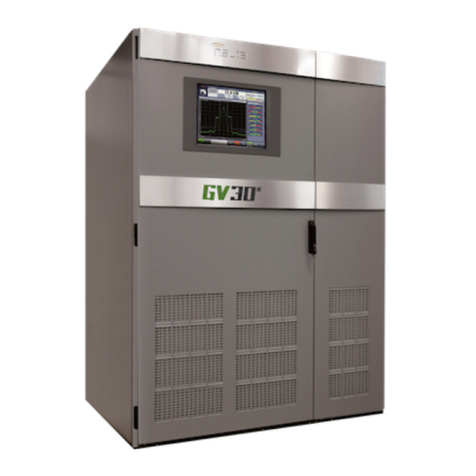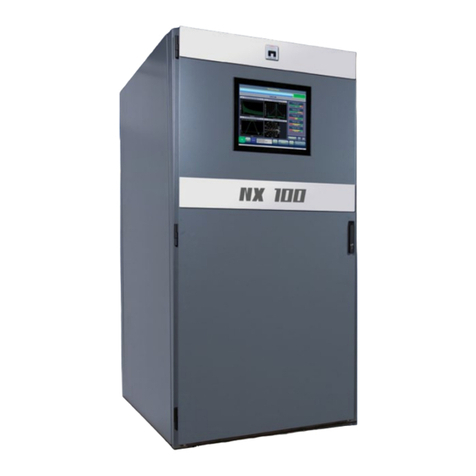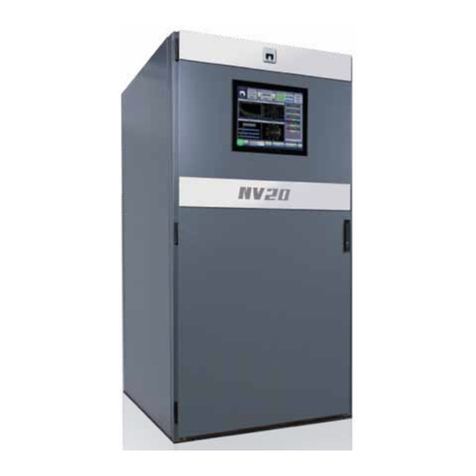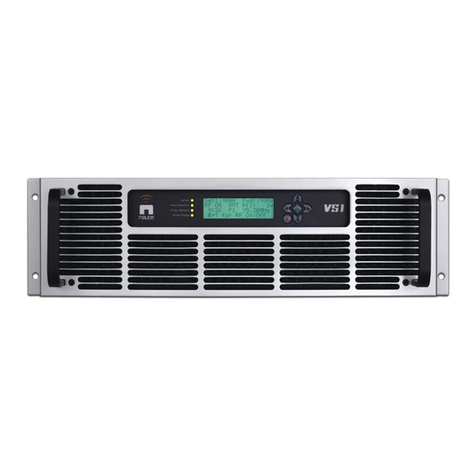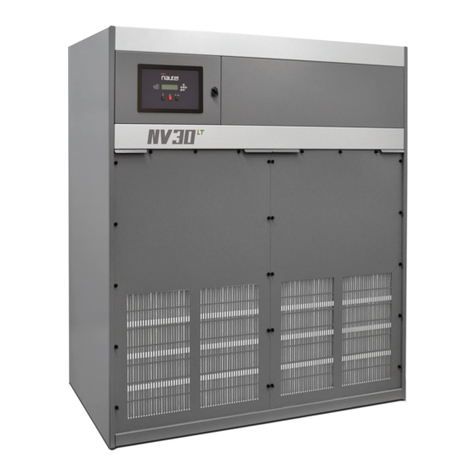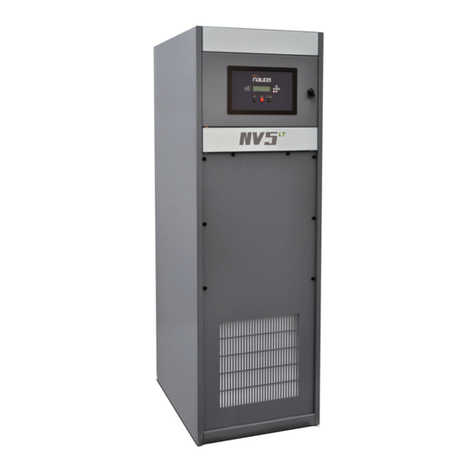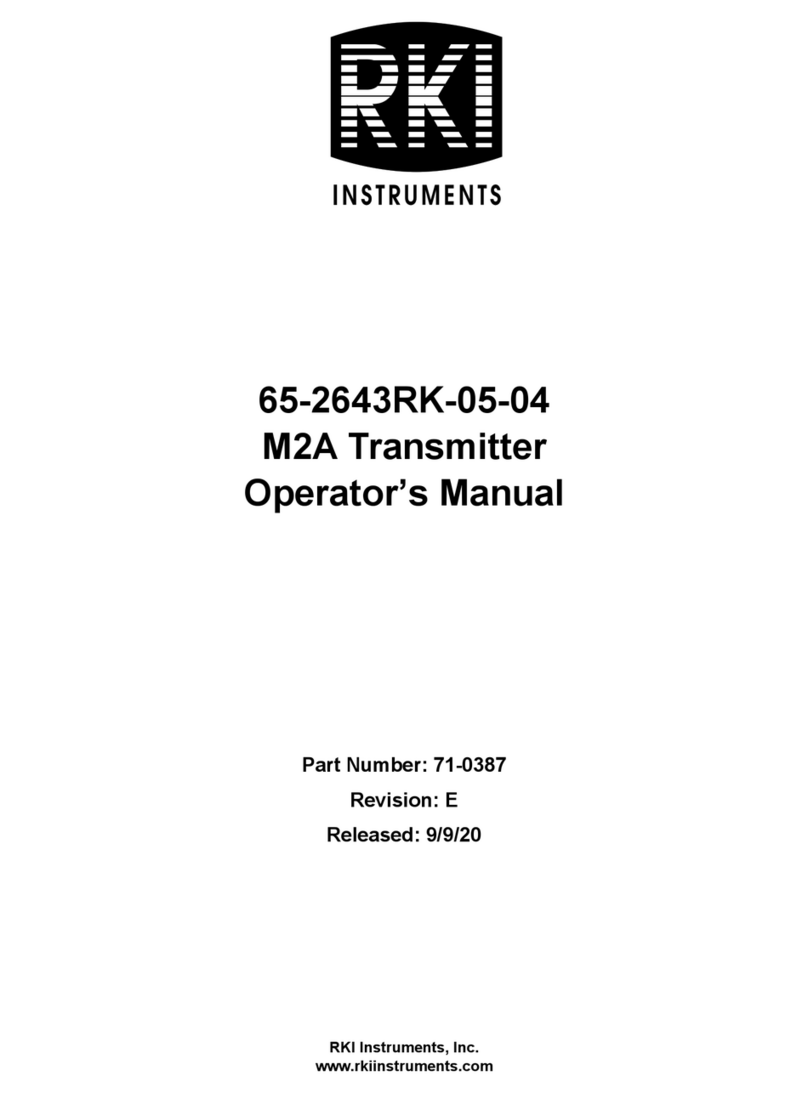
Page 2 Dual ND500II (User Supplied Cabinet) – IS03003
Issue 1.0 Information Sheet
(g) If transmitter B is selected as the
'main' transmitter, an open collector
SHTDN ALM (A) signal will be applied to
3A1J4-23 from A11J4-17 ('shutdown')
of transmitter A.
3.2 Shutdown/Changeover: If the
selected 'main' transmitter is shutdown
because an abnormal condition was sensed
for more than 20 seconds (maximum pre-
settable time period is 80 seconds), or for
any other reason, the following will occur:
(a) The +15V power supply in the
selected 'main' transmitter will be
switched off, removing +15V from
A11J4-13 of the main transmitter and
from A11J4-20 of the standby
transmitter via the dual transmitter
interface assembly (unit 3). The
standby transmitter will turn on.
(b) If transmitter A is selected as the
'main' transmitter, the main/standby
relay in the transmitter A's harmonic
filter will de-energize and route the
'standby' (B) transmitter's output to the
antenna system.
(c) If transmitter B is selected as the
'main' transmitter, the main/standby
relay in the transmitter A's harmonic
filter will energize and route the
'standby' (A) transmitter's output to the
antenna system.
(d) The 'standby' transmitter will provide
+15V and the manually controlled
slewing commands (ATU CONT) for the
antenna system's antenna tuning unit
via the dual transmitter interface
assembly (unit 3).
(e) The standby transmitter will be
providing the 'audio out' (RMT AUD)
sample.
(f) If transmitter A is selected as the
'main' transmitter, an open collector
SHTDN ALM (A)signal will be applied to
3A1J4-23 from A11J4-17 ('shutdown')
of transmitter A, causing a ground to
be applied to RMT CHGOV ALM outputs
3A1J1-8 and 3A1TB3-6, indicating the
standby transmitter is on.
(g) If transmitter B is selected as the
'main' transmitter, an open collector
SHTDN ALM (B)signal will be applied to
3A1J5-23 from A11J4-17 ('shutdown')
of transmitter B, causing a ground to
be applied to RMT CHGOV ALM outputs
3A1J1-8 and 3A1TB3-6, indicating the
standby transmitter is on.
4. INSTALLATION INFORMATION
Complete or verify the following
requirements are completed during
installation of the dual transmitter system.
NOTE
The following instructions include the
installation of two slide kits, Nautel Part
#158-8015 (one per transmitter). These slide
kits allow the transmitters to be pulled out of
the user-supplied cabinet to allow access to
the ND500II circuitry and support the weight
of the transmitter. Each transmitter weighs
approximately 41kg/90 lbs and cannot be
supported by only the transmitter’s front
panel mounting holes. If the slide kits are not
used, suitable provision must be taken to
support the transmitter in the rack. The
installation of the drawer mounting slides will
vary depending on the cabinet and may
require some modification to fit.
(a) Ensure the cabinet will not topple,
when the transmitters are extended on
their drawer slides, by securely bolting
the cabinet to its mounting surface.
(b) Install the drawer slides (from slide
kits P/N 158-8015) for both
transmitters. Figure 4 shows an
example of the installation. Ensure the
slides are secured to the cabinet, level
and positioned correctly to allow the
transmitters to be installed.
(c) Install the drawer slides on the
transmitters as shown in figure 4.
(d) Install transmitters A and B in the
cabinet (using the drawer slides)
ensuring transmitter A (ND500II-11x-
x2x) is located above transmitter B
(ND500II-01x-x2x). Figure 4 shows
the recommended orientation of
assemblies in the cabinet. Failure to
meet this layout may result in the
supplied cabling not fitting the cabinet.

